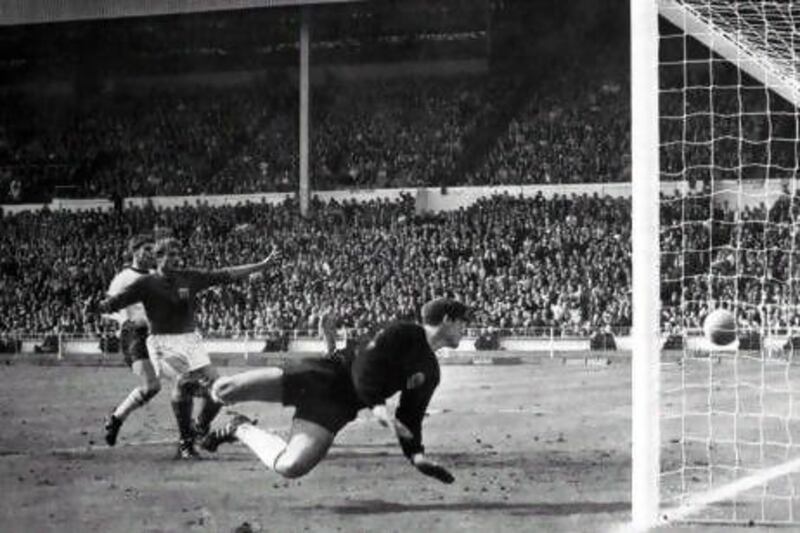Football finally embraced goal-line technology as Fifa's lawmaking panel yesterday approved two systems for use in matches.
Fifa will introduce goal-line technology at the seven-team Club World Cup in Japan in December, and plans to use it in Brazil at the 2013 Confederations Cup and 2014 World Cup, said Jerome Valcke, the secretary general.
"We want to make sure that the systems at the World Cup work at 150 per cent, not 90 per cent," Valcke said.
Fifa will use both Hawk-Eye and GoalRef systems in Japan, after they won "unanimous" support from the International Football Association Board (IFAB) panel, Valcke said.
The English Premier League is expected to adopt one of the systems - which are expected to cost up to $250,000 per stadium - for use during the coming season.
Sepp Blatter, the Fifa president, was a member of the IFAB panel which accepted test results proving that the systems quickly and accurately judge when balls cross the goal line.
Hawk-Eye is a British camera-based system already used in tennis and cricket. GoalRef is a Danish-German project using magnetic sensors to track a special ball.
The historic decision was taken by an IFAB panel comprising officials from Fifa and the four British football associations.
The decision was expected and completed Blatter's U-turn on the issue; Fifa previously had blocked using technology to help referees make decisions.
Blatter's conversion came two years ago when he saw England denied a clear goal by the midfielder Frank Lampard against Germany at the 2010 World Cup.
Two days later, Blatter said Fifa must reopen the debate, though insisting it must involve only goal-line decisions. Video replay remains off limits for judgement calls, such as penalties or offside.
Blatter achieved his goal against the wishes of the Uefa president Michel Platini, who opposes giving match officials any high-tech aids.
Still, Platini's rival project, which seeks to keep all technology out of decision-making, also received support yesterday.
Uefa's proposal of a five-referees system to officiate matches - placing an additional assistant beside each goal - won IFAB approval after three years of trials in more than 1,000 matches.
That decision came just two weeks after Platini's pet project suffered its biggest public failure, helping oust the co-host Ukraine from the European Championship. A Hungarian refereeing team did not spot that a shot by the Ukraine forward Marko Devic crossed the line before the England defender John Terry hooked the ball clear. England won 1-0 and moved to the quarter-finals.
Neither goal-line technology nor the five-referee system is binding on leagues or competition organisers. Both are options to choose - and pay for - once IFAB approved the principle.
Major League Soccer in the United States has said it wants to adopt goal-line systems.
IFAB is a 126-year-old body which acts as guardian of the laws of football.
Six votes are needed to approve a change, with Fifa holding a four-vote bloc and the four British associations having one vote each.
Headscarves ban lift ‘good for Muslim community’
Football chiefs agreed last night to lift a ban on women wearing headscarves during games, clearing the way for the participation of many Muslim nations in top-flight competition.
Until the vote by the International Football Association Board (IFAB), players were prevented from wearing a headscarf, or hijab, at the sport’s highest level for safety reasons.
Critics said the ban promoted inequality at the highest level of the world’s most popular game.
Public changes in the governing body’s thinking were clear last year when it was decided that the hijab was a cultural rather than a religious symbol.
In March, the IFAB – custodian of the game’s laws – said it favoured female players wearing the hijab in games organised by Fifa.
That announcement followed the proposal, by the Fifa vice president Prince Ali of Jordan, backing a Velcro hijab which comes apart.
The world governing body came under pressure to lift the ban in 2007, after an 11-year-old girl in Canada was prevented from wearing a hijab for safety reasons. In 2011, the Iranian team was disqualified for refusing to remove their headscarves moments before kick-off in the 2012 Olympic second-round qualifying match against Jordan.
The decision caused outrage in Iran, with the president, Mahmoud Ahmadinejad, accusing Fifa of acting like “dictators” and “colonialists”.
Alex Soosay, general secretary of the Asian Football Confederation (AFC), said the AFC, based in the capital of Muslim-majority Malaysia, Kuala Lumpur, would welcome a decision to lift the ban. “It’s a good news for us. It will benefit the community. It will be good for the Muslim community,” he said, adding that Middle Eastern and other Muslim countries had contributed “a lot” to the sport’s development.
Zhang Jilong, the AFC president, in January called for the ban to be lifted, claiming new designs could prevent neck injuries.
According to Fifa, more than 29 million women and girls around the world play the game.
Follow us
[ @SprtNationalUAE ]





